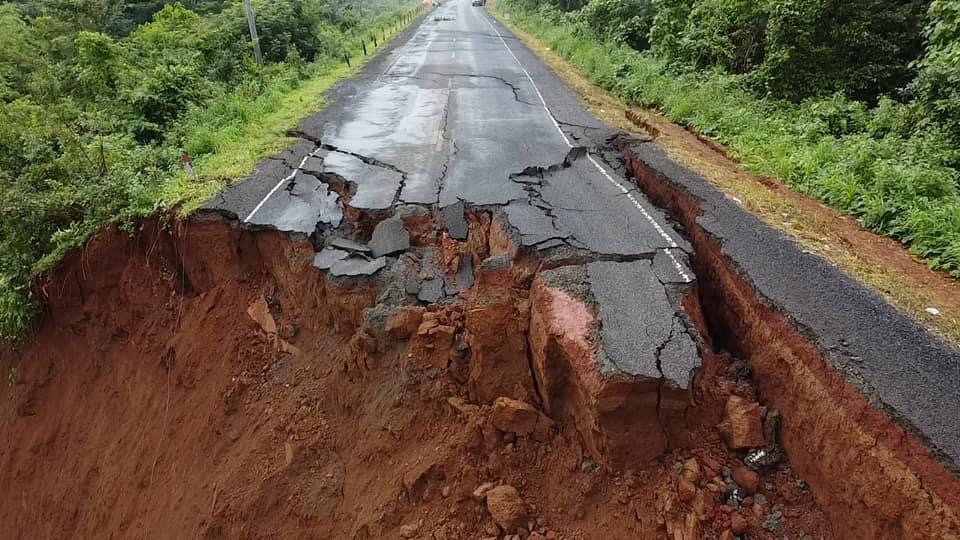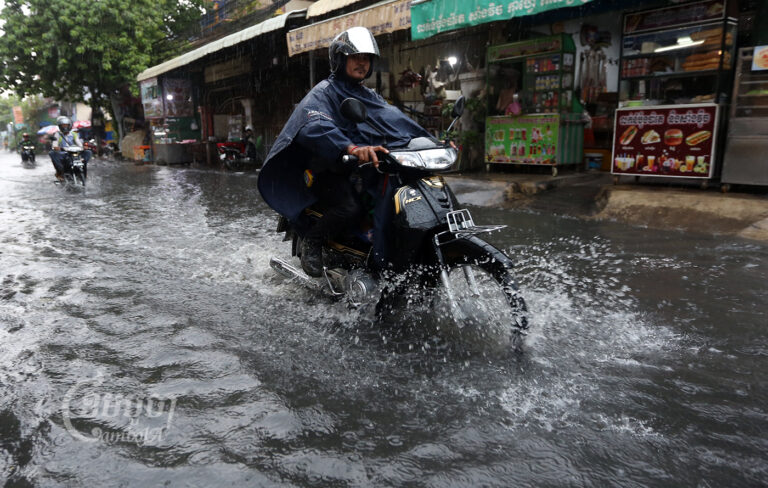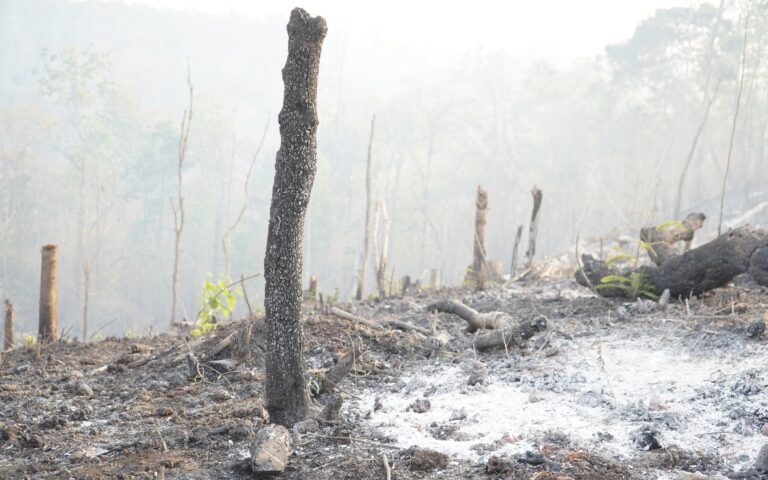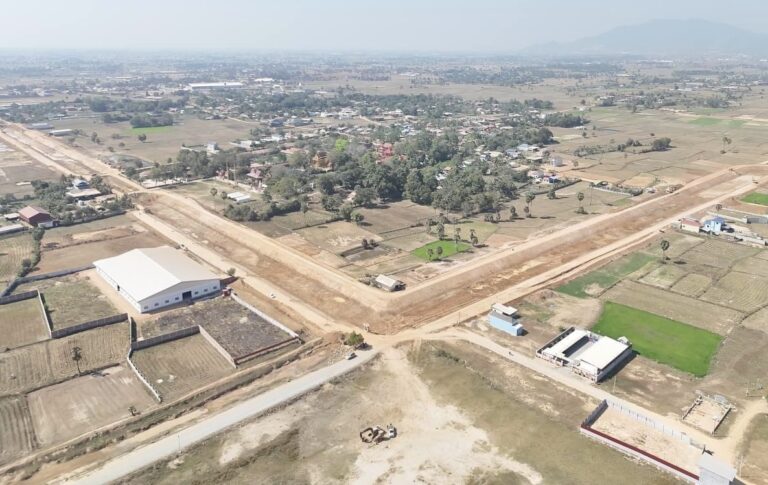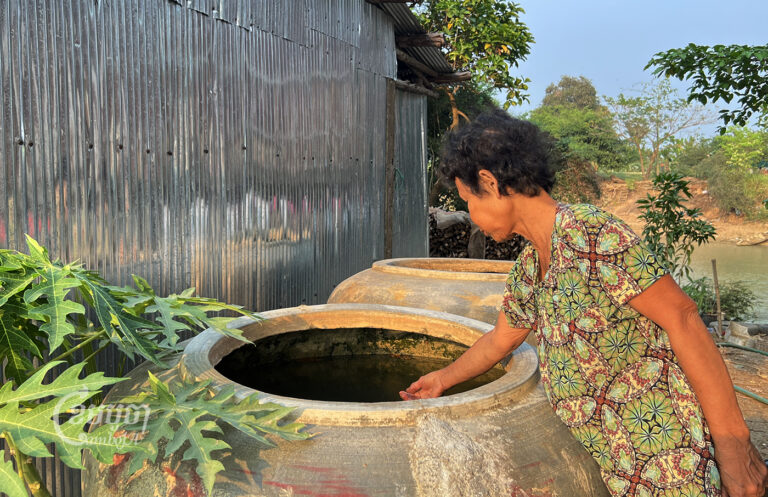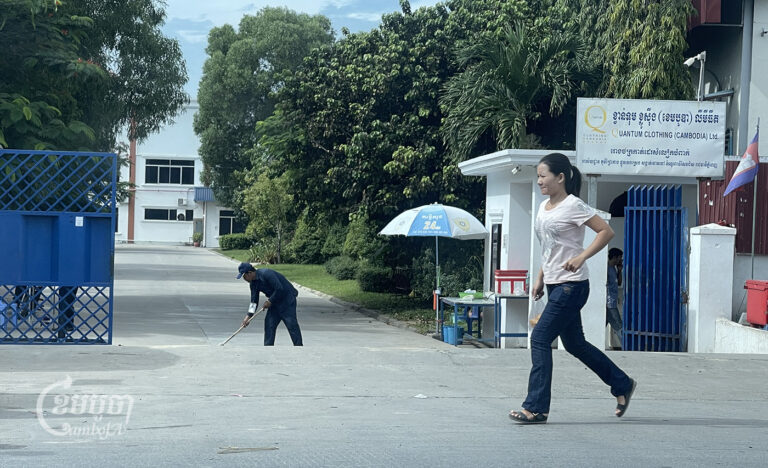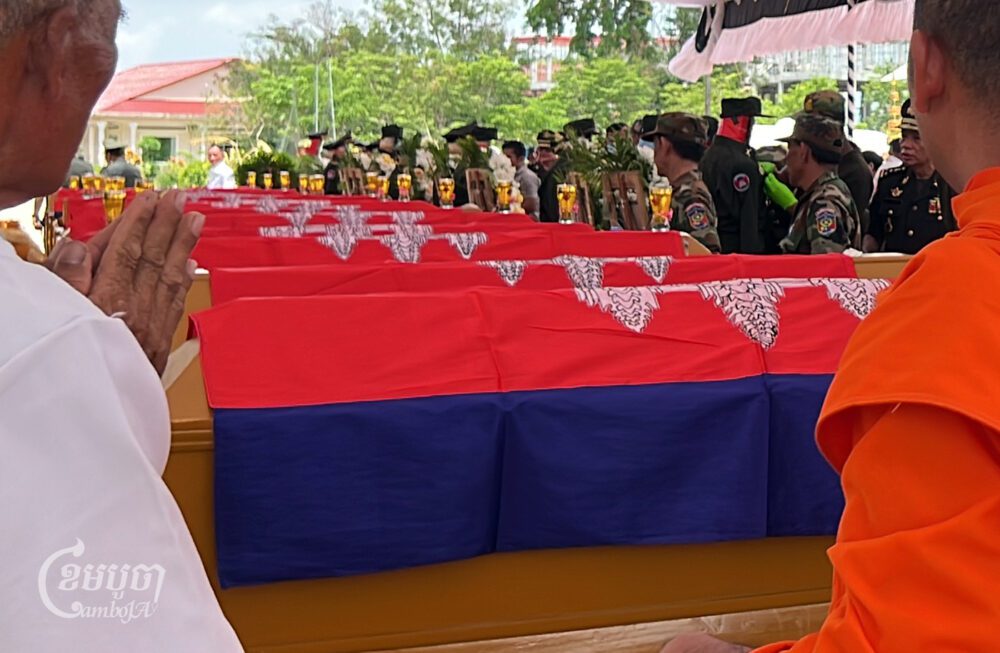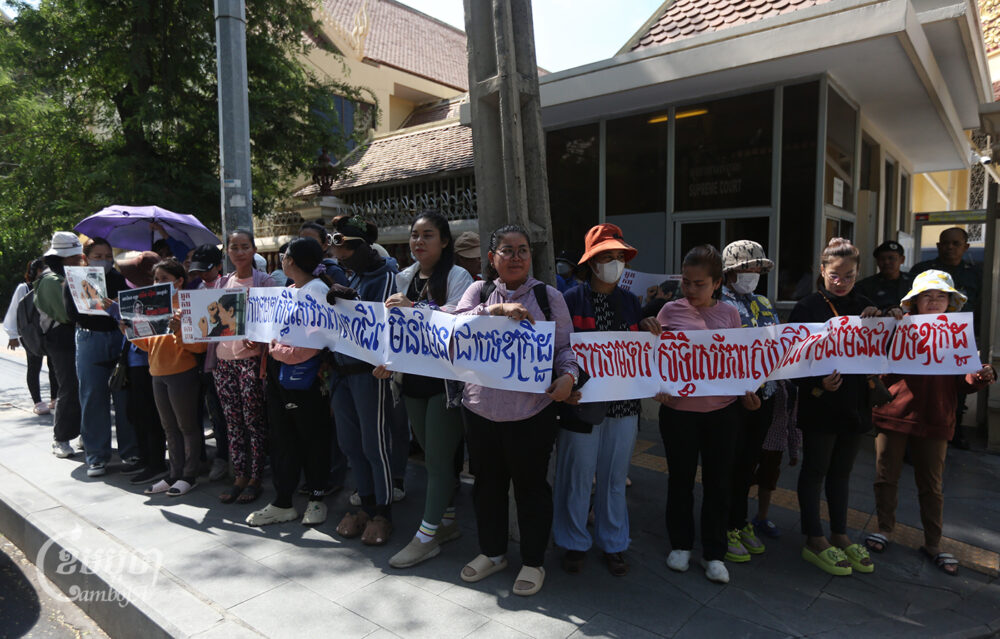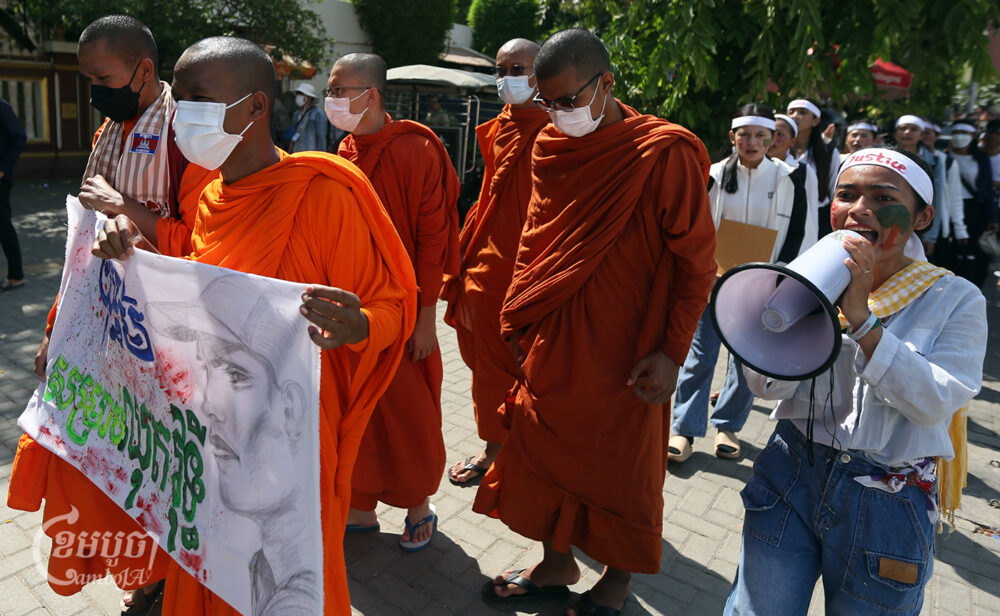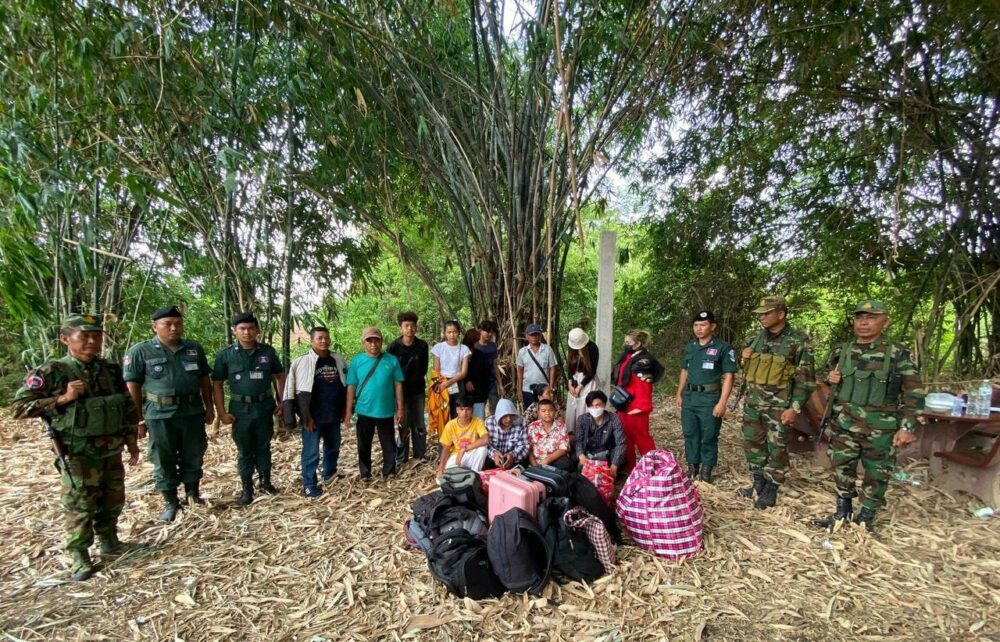National Road 76 Mondulkiri – Phnom Penh has been temporarily closed since Tuesday after heavy rains and flash floods caused the road to collapse. All vehicles traveling from Mondulkiri to Phnom Penh must now go through Kratie, Stung Treng and Ratanakiri, according to the Mondulkiri Provincial Administration.
Mondulkiri’s Provincial Department of Public Works and Transport and its Department of Development and Rural Development began building a temporary detour on Wednesday.
Ros Kim Thon, the Mondulkiri Public Works Department director, told CamboJA that the road collapsed around 5 a.m. Tuesday and caused about 10 meters of damage.
“The mountain road collapsing in the rainy season is inevitable,” he said, noting that this was the first time the road had collapsed since it was constructed. “In foreign countries they also have [mountain road collapses] as well.”
He would not provide an answer when a CamboJA reporter asked who completed the road construction project.
According to local outlet Post News, the 172-kilometer section of National Road 76, between Sen Monorom in Mondulkiri province and Ta Ang in Ratanakiri province, was completed in November 2016. The project widened the road to 9 meters. The two-layer, paved road cost $92 million and took around 3 and a half years to complete.
Prerng Tola, a resident in Mondulkiri, told CamboJa that the road collapsed after a downpour in an area of the road with no trees nearby.
“Road 76 last night could not be used to go to Phnom Penh,” he said. “There was no flooding, but the road collapsed because there were no trees [in the area] to hold the ground [of the road].”
Bey Vanny, the Mondulkiri coordinator for the human rights group Adhoc, told CamboJA that rain water flows down from the mountain which can increase the risk of the road collapsing. He confirmed that this road collapse did not endanger anyone, but the temporary suspension of traffic helped people avoid any danger.

Vasim Soriya, a spokesperson for the Ministry of Public Works and Transport, declined to comment, referring a CamboJA reporter to Heang Sotheayuth, the director general of the General Department of Technology and Public Relations. Sotheayuth could not be reached.
This week eight provinces have had heavy rain and flooding, leading to deaths, evacuations and destroyed crops. Two districts in Mondulkiri, Koh Nhaek and Kaev Seima, have been affected.
The flash flooding in these two districts affected 115 families, 81 houses and 82 hectares of rice fields, according to a report from the National Committee for Disaster Management of Cambodia (NCDM).
The body of a missing woman, whose tent flooded on the evening of July 29 while camping at Ormal Waterfall Resort in Makprang commune, was found, according to a Wednesday Facebook post by the Kampot provincial police. An NCDM spokesperson told CamboJA on Tuesday that the body of her companion had already been found.
Another resident of Mondulkiri province, Khorn Phalla, said that the rain over the last month has made it difficult for her to farm. While there have not been flash floods in her area, she is worried that her crops, such as corn, rice, cassava, and pumpkin, will be destroyed.
“In my area, there is no flooding, but strong winds and rain every day,” she said. “It is raining heavily, so it will rot the roots of the crops.”
The Ministry of Water Resources and Meteorology notified people to expect moderate to heavy rain with thunderstorms and strong winds from August 2 to August 8.
An Sokhim, president of the Cambodian Red Cross at Mondulkiri province, said his team is working to help residents in Koh Nhek district and Keo Seima district by providing groceries and other necessities.
From January to July 2023, lightning strikes, severe winds and fires have caused the deaths of 90 people and 217 injuries, according to an NCDM report. The two provinces most frequently affected by lightning strikes are Kampong Thom and Battambang, where 59 people have been killed. Lightning strikes also caused the deaths of 87 animals, including cows and buffaloes.
Severe wind, which occurred 221 times across all provinces, was responsible for eight deaths.


